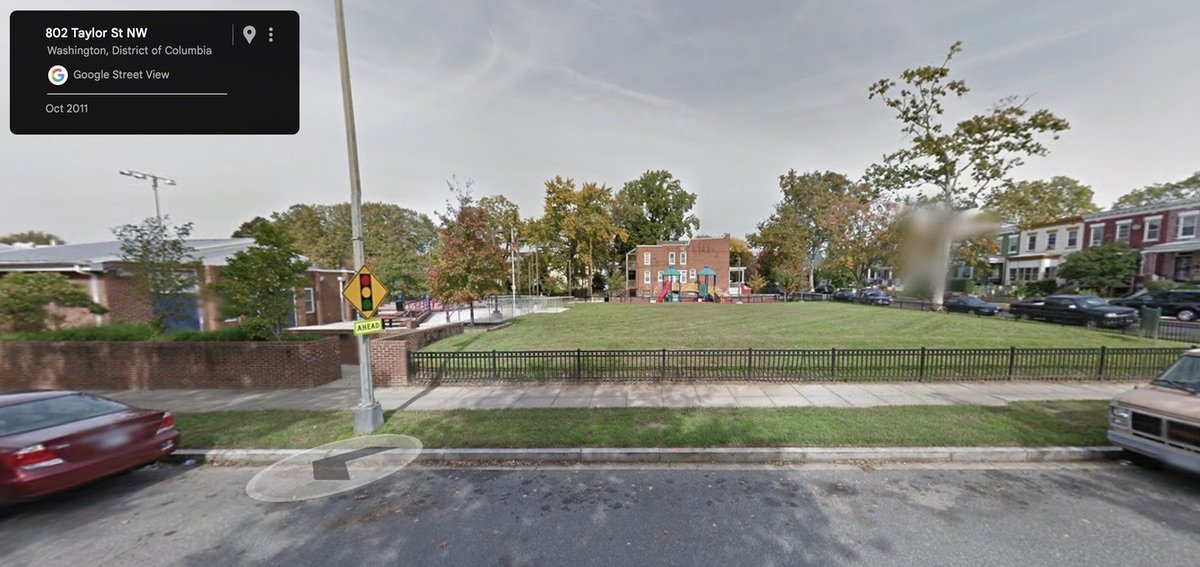DC Water is installing green infrastructure across Petworth
/Workers piecing together a permeable alley. Joints between bricks allow rain water to percolate underground.
by Austin Schott
April showers bring May flowers… or so the proverb says. But what the proverb woefully ignores is that heavy showers, if unmitigated, can overburden sewer systems and carry trash, sediment and pollutants into sewer systems or bodies of water. I’ll admit, the proverb isn’t quite as catchy when those details are included.
Thankfully, DC Water is fully aware of pollutants, and they’re working to ensure our local water is kept clean. This spring, they started construction on a new phase of DC’s Clean River Project, installing green infrastructure over 22 acres in six areas across the greater Petworth area.
As you may know know, pipes under the city carry unsanitary water to wastewater treatment facilities. Most of DC’s sewers separate out sewage from stormwater – rainwater that flows in gutters or down drain pipes. The sewage travels to wastewater treatment facilities, while the stormwater is deposited into bodies of water, including Rock Creek, Anacostia River and the Potomac.
Rainwater and sewage never interact in separated sewer systems. In combined sewer systems, both rainwater and sewage travel to treatment facilities. (Courtesy DC Water)
Meanwhile, about a third of sewers in the city, especially the older ones, combine the sewage and stormwater into a single set of pipes that travel directly to the treatment facilities; dams prevent the unsanitary liquid from reaching creeks and rivers. This works fine most of the time, but in the event of a major rainstorm, these dams can be overrun and wastewater can end up in creeks and rivers.
Enter the DC Clean Rivers Project.
Seth Charde, a senior advisor at DC Water and senior program manager for green infrastructure, told ANC 4C last month that they’re undertaking “One of the largest environmental projects in the history of the city. We’re building 18 miles of tunnels and then building green infrastructure at the surface. All of which is intended to reduce overflows to DC creeks and rivers.”
Following the first stage of the project in Brightwood Park and Manor Park, the DC Clean Rivers Project in our area has moved on to build permeable alleys and bio-retentions, examples of “green infrastructure,” in six areas of the greater Petworth neighborhood.
An example of a permeable alley in DC
Permeable alleys allow water to slowly percolate through a porous surface or joints in a layer of brick. Instead of rainwater sliding across impervious pavement to the nearest gutter, a good portion of the water will simply soak into the alley itself, where water will dissipate into an underground reservoir layer or drainage underneath the alley.
Similarly, city-installed flower-filled planters, called bio-retentions, soak up rain as it falls and collect runoff from gutters, limiting the amount of water heading to the sewers during a storm.
A bio-retention planting designed to decrease water that goes into the sewer system (image courtesy DC Water)
Permeable alleys and bio-retentions serve similar purposes. As Charde shared with ANC 4C, “Some of the water soaks into the ground and the rest is slowly led back into the combined sewer system after the storm has passed. And after the storm, there’s capacity in the pipe so we can keep it in the pipe and get it down to Blue Plains [the major DC wastewater treatment plant] where we can clean it up.”
A planter bio-retention in DC.
DC pinpointed a few key areas across Petworth for the newest set of installations, and construction is already underway. In addition to water quality benefits residents enjoy when the infrastructure prevents sewage from going into our creeks and rivers, he noted, “There's also secondary benefits where pollutants that are in the storm water, which comes off of our road system, would be taken up by the plants in the bio-retentions.”
Residents I heard from responded positively to DC Water’s efforts in Petworth. ANC 4C Commissioner Alan Wehler, in the March ANC 4C meeting, referenced the larger scale DC Clean Rivers Project, saying, “This program overall has been something I’m really excited about DC doing. I’m super excited to see pictures of the river otters and beavers that have taken up residence in the Anacostia River, which speaks to how effective the program has been. I’m looking forward to seeing some of those in Rock Creek Park as this project gets moving.”
In Permeable Alleys water can soak through the alley to the soil and drainage systems underneath.
Eric Lienhard, Project Manager for DC Clean Rivers Project, emphasized in his discussion with me that DC Water is working hard to “Minimize the impacts of construction and new installations to residents,” by using lessons learned from past projects while maximizing impact. For example, bio-retentions are concentrated when possible in no-parking areas, to limit interference with parking.
Alan Chen, who at the time of our conversation was an engineer for DC Clean Rivers Project, described how they considered what infrastructure would be appropriate for Area 3 on the north end of ANC 4C, between Emerson Street and Longfellow Street. DC Water plans to install several permeable alleys in that section of the neighborhood, but is not planning any bio-retentions. One of the major reasons, Alan told me, is that these streets host “Massive street trees that are 30+ inches wide and there’s just not much room for planting bio-retentions, but the alleys are very suitable. They're very wide, leading to huge contributing drainage areas.”
Construction at each site will last about three to six weeks. The biggest change residents will likely experience is that they may have to move their trash cans out to the front of their house for a few weeks if their alley is getting a makeover.
ANC 1A Commissioner Michael Wray isn’t too worried about any inconvenience caused by the installation. “Overall, these are good for the city,” he said, “While it is always difficult to have your routine interrupted, this is not too much of a burden in my opinion.”
DC Water will be providing regular maintenance to the sites. The city decided to avoid sweeping the alleys to prevent sediment from clogging the joints in brick alleys. Instead the city will instead vacuum the alleys once a month. Crews will also weed, mulch and clean trash out of bio-retentions on a regular basis. DC Water also has a hotline, 1-800-685-9302, in case residents identify issues with their local green infrastructure.
A sweeper cleaning a permeable alley
Lienhard also encouraged the community to rally around green infrastructure and play a role themselves in keeping our city clean: “If you walk past the by a bio-retention and you notice a bottle in there, be a good neighbor and take it out.”
The projects also remind residents that “the district cares about the environment — that we're doing something about stormwater and we are doing something about combined sewers,” he said. “So there's a sense of pride that comes along with that — knowing that you're helping the larger good. You know that the efforts here, that are happening in front of your home or behind your home, are contributing to a larger benefit to the residents of the District.”
Better water management means cleaner rivers and a better living condition for us all.



















